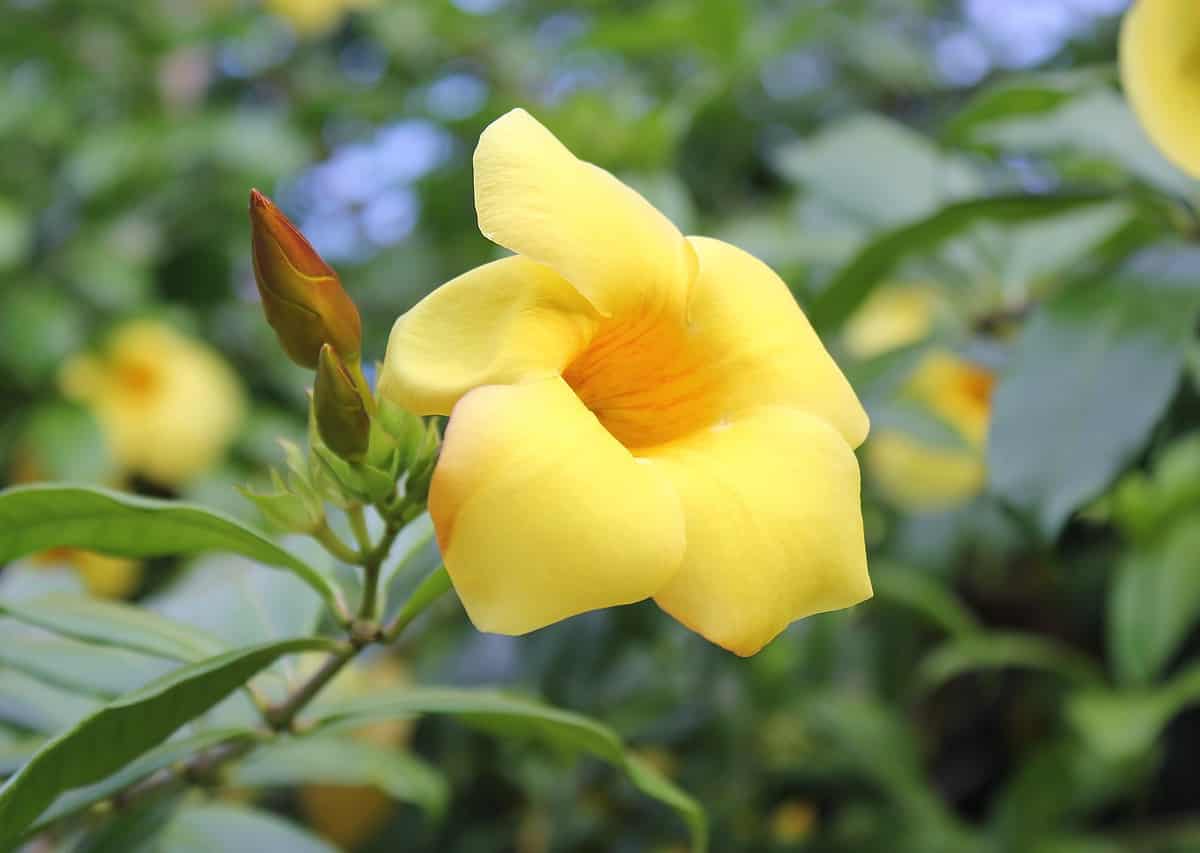Here’s another eco-garden ornamental that is sure to please your senses. Commonly referred to as San José here in Costa Rica, Allamanda cathartica is a hardy Brazilian vine that provides bright yellow, flaring trumpet flowers most of the year, and requires little attention once it’s established. Allamanda (pronounced ala-MAN-da) belongs to the family Apocynaceae and is a relative of Oleander. It has evergreen, whorled leaves and a woody vine-like stem, which makes it ideal for covering walls or fences.
It can also be clipped to create a bushy, freestanding specimen. Allamanda is an all-time favorite in Costa Rica and can be found in most leading nurseries or in practically any barrio in most regions of the country. Stem cutting scan be obtained to propagate your own home garden plants and most Tico neighbors probably would be more than glad to give you a few cuttings.
These cuttings can be started directly in the soil in their permanent sites or (with a little more care) can be planted in plastic nursery bags with prepared potting soil to insure better results. Plant 8-inch cuttings about 4 inches deep and keep them well watered until they begin to sprout new leaves and become well rooted. Then, bring the new cuttings slowly into full sun and transplant them to their permanent sites.
Keep them well cultivated during the initial stages of their growth to prevent them from being choked out by competing weeds. After that, only a yearly application of fertilizers, preferably organic composts, can be applied around the base of each plant to keep them growing vigorously and producing an abundance of flowers. Allamanda does best in full sun settings but can handle areas with partial shade.
These plants also adapt well to most soils and require no irrigation during the dry season, which can play an important role in our conservation of local water resources and a big difference in your water bill.
Allamanda is also a hardy plant that does not require spraying with chemical insecticides or fungicides. All in all, Allamanda wins a green flag when it comes to its eco-friendliness. One important note – the Allamandas are toxic and can cause vomiting and diarrhea, if ingested, so be sure children are forewarned about the flowers and leaves. Two more varieties of Allamanda are worth mentioning.
The purple allamanda (A. violacea), which has small, magenta-violet flowers and the pink allamanda (Mandevilla splendens), which has larger, pinkish lavender flowers. Both are available at leading nurseries but are harder to find around the neighborhood. These species are also hardy, eco-friendly ornamentals that can add more colorful tones to your patio and home landscaping. Until next time – happy gardening.






